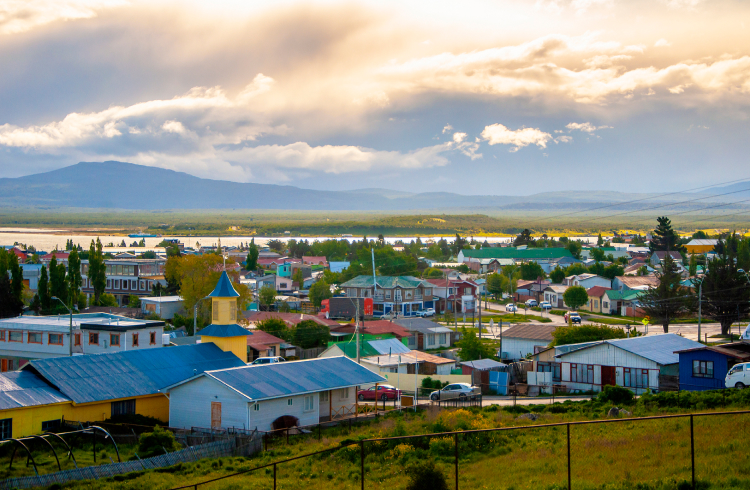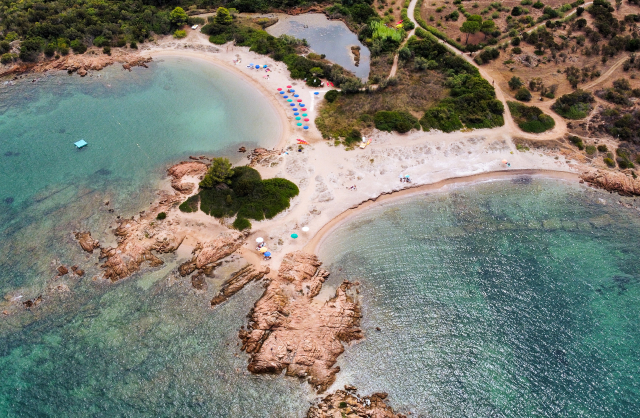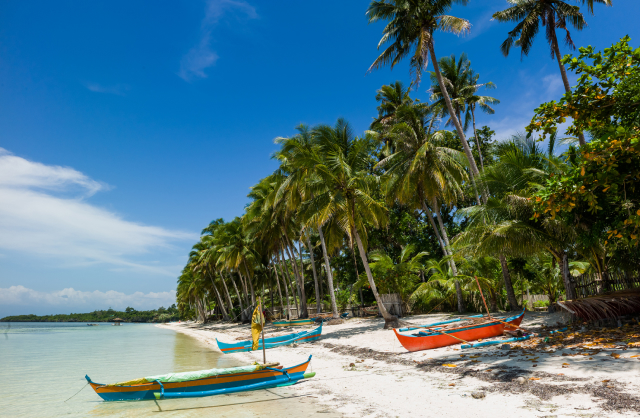Destination Zero Waste – the Places Defining Better Lives
We can travel more consciously by visiting those places making bold leaps towards zero waste… and by leaving them just as we found them.
 Photo © Getty Images/Javier Ghersi
Photo © Getty Images/Javier Ghersi
Fortunately for us travel lovers, some of the best destinations on earth are also some of the most progressive in their commitment to waste reduction, aiming towards a zero-waste economy. And it’s not just some of the big names – those large modern cities where we expect to find plenty of innovation towards waste management. I’m thinking San Francisco, Copenhagen, Singapore.
Global movement
In far-flung corners of the globe, there are also smaller, more remote – and beautiful – destinations making impressive efforts to eliminate waste.
Take Siquijor, a tiny island province in the Philippines home to around 100,000 people. Plastic is prohibited on the island meaning that people often take their own bags to markets and grocery stores, and their own reusable containers to restaurants.
The island’s roads, parks, beaches, and markets are free of plastic litter – and the local marine and bird life can breathe a sigh of relief in the nation’s third largest producer of marine plastic pollution.
What is zero waste?
The Global Alliance for Incinerator Alternatives (GAIA) recently defined zero waste as “a comprehensive waste management approach that prioritizes waste reduction and material recovery.
“Strategies include policy interventions and business approaches to drive the redesign of products and delivery systems; and increasing access to reuse, repair, recycling, and composting.
“The ultimate aim is to create a circular economy, shrinking waste disposal to zero.”
So, zero waste is more than just managing waste – it’s about not producing it in the first place and increasing reuse and recycling. Traditional disposal systems that rely on incineration and landfill to handle waste are not zero waste – these are expensive and harmful to the environment.

The plastic problem
The issue for many tourist destinations is that they often end up being spoiled by their success; while they attract plenty of visitors, with those greater numbers comes extra rubbish and many smaller places don’t have the extra resources to deal with it.
Claire Arkin, Global Communications Lead for GAIA, told us: “Many tourist destinations tend to be near bodies of water like oceans, rivers and lakes. But the natural beauty that draws tourists to these areas become hotspots for waste pollution, threatening the tourism economy for residents.
“Plastic pollution in particular causes major problems,” Arkin said. “Most single-use plastic is used for a short period and then stays in the environment in one form or another for hundreds of years.
“So many tourist destinations have to deal with growing volumes of plastic waste that are impossible to manage. This plastic gets into bodies of water, litters streets, clogs gutters and drains, etc.”
This not only detracts from the destination’s beauty, Arkin told us, but it’s expensive to clean up. It can also make areas more prone to flooding, and exposes residents to toxic pollution from sources like microplastics and emissions from burning plastic.
What can travelers do to help?
“Tourists can seek out and support accommodations and businesses that practice zero waste,” Arkin said.
“Travelers can also take the opportunity to learn more about the community groups and organizations working towards zero waste in the place that they are visiting – these kinds of cross-regional exchanges help the zero-waste movement grow!”
Or she suggests joining such groups to support their efforts towards zero waste, including GAIA.
Leave nothing behind
Camila Aguilera of GAIA Latin America offers practical ways tourists can help destinations on their road to zero waste. Aguilera works with Puerto Natales, a city in Chilean Patagonia making deep inroads towards zero waste.
Puerto Natales is the primary transit point of travelers to Torres del Paine National Park, “one of the most visited natural in Chile,” said Aguilera. During some periods the city’s overpopulation with tourists seriously affects its waste management, exacerbated by its remote location.
GAIA Latin America works with a local environmental conservation organization Fundación Lenga and collaborates with a tour operator and a hostel on a program to reduce waste and promote recycling.
“Although recycling is very difficult since the city cannot be reached by road,” Aguilera said. “Making the transport of recyclable waste not only very difficult, but also costly.
“Where possible, always refill and reuse containers. When visiting national parks, return with waste at least to the nearest town. If it is difficult to manage waste in Puerto Natales, it is much more complex to do so in a remote national park.”
Auguilera also advises asking tourist operators and hotels and hostels if they have zero-waste initiatives in their businesses.
“Tourism is the economic engine of the area and if tourists themselves start making zero waste demands, it can accelerate the efforts of local communities and organizations such as Fundación Lenga.”
Local legislation
However, Aguilera said it’s not tourists themselves that are the problem, but the lack of legal mandates to control waste.
“Of course, tourists generate a lot of disposable waste because they are just passing through, but it is not the tourists themselves who are the problem. The real problem is that in places as remote and naturally important as Patagonia, the use of disposable containers should not be allowed.
“There should be a legal mandate forcing companies to provide the possibility of reuse and refilling. But until that happens, tourists' waste is affecting overburdened management systems… We are talking about a tremendously windy place, where waste can end up far away in nature.”

Zero waste – a win-win
Back to Siquijor in the Philippines, which made such mandates, with great success.
According to a report on the island’s waste reduction, making waste management part of the agenda results in “a win-win scenario for local communities, especially in highly urbanized and/or tourism areas with challenges in land space for sanitary landfills.”
“The community gets to maintain the beauty of the place and invite more tourists while also saving money that would otherwise be spent on managing increasing waste.”
Aiming for zero waste through waste reduction, reuse, repair and recycling also can also boost local economies by job generation with not only more, but better, jobs, according to GAIA.
They estimate that, compared with incinerators and landfills, repair creates over 200 times more jobs; recycling, over 50 times more jobs; and remanufacturing, almost 30 times more jobs.”
Success in Sardinia
Over in Europe, another destination that has become a model for zero-waste progress is the beautiful Italian island Sardinia. A combination of government legislation and incentives has transformed waste management on the island over twenty years, despite the challenges of its relative remoteness from the mainland and large visitor numbers.
The island aimed to stop biowaste from ending up in landfill with a compulsory separate collection, as well as targets on the amount of biowaste per inhabitant and the introduction of a reward/penalty system.
Now, 206 out of 377 municipalities have achieved a recycling rate above 65 per cent. To put this in perspective, the European recycling target for 2035 is 65 per cent, so over half of Sardinia’s municipalities are already there.
That sounds like a win-win for both locals and visitors.
Related articles
Simple and flexible travel insurance
You can buy at home or while traveling, and claim online from anywhere in the world. With 150+ adventure activities covered and 24/7 emergency assistance.
Get a quote


No Comments